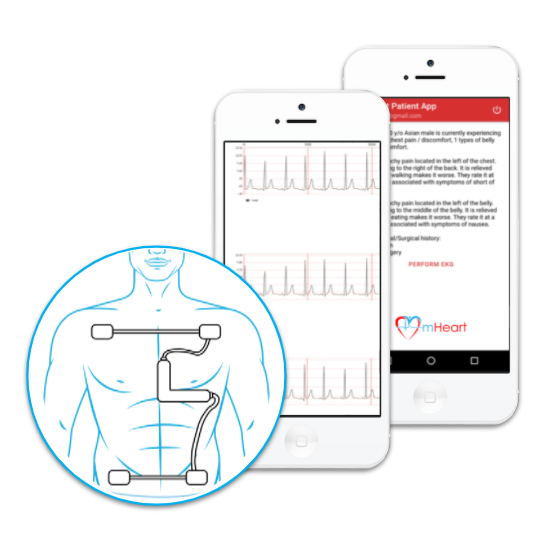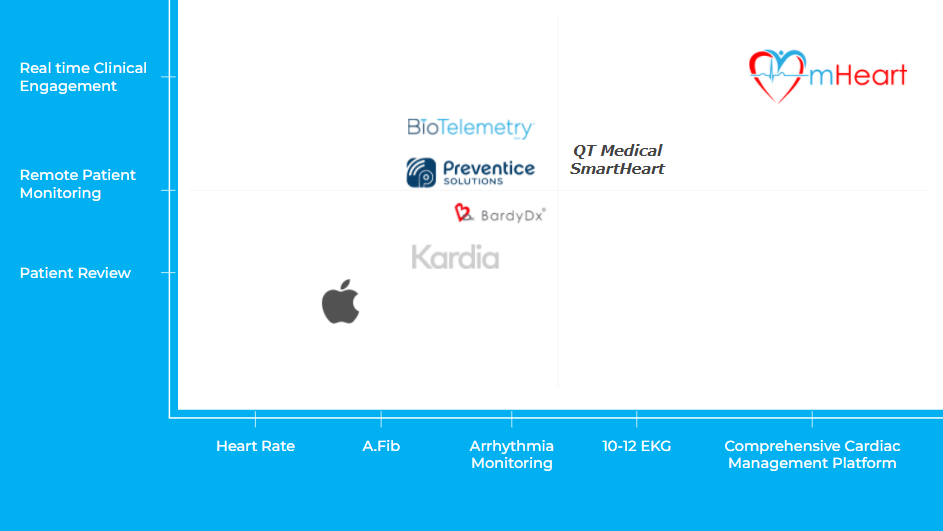



mHeart is being created by a cardiologist who has been in practice for over 20 years, with extensive experience in hospital administration. mHeart was created to address the most important pain points for each stakeholder—patient, cardiologist, healthcare system and insurer.
Patients don’t want to go to the ER and don’t want unnecessary costs.
mHeart is ideal for patients at risk for heart disease; patients who have had a prior heart attack, coronary stent or bypass surgery; and those patients with recurrent non-cardiac pain whose anxiety sends them to the ER. Patients in underserved regions need access to specialty cardiac care, both inner city and rural.

If the patient has chest pain, mHeart becomes a mobile triage platform. mHeart would ask the patient a series of questions like those asked by a cardiologist; integrate the responses and medical history; and ask the patient to perform their vEKG.
All of this information together would allow mHeart to accurately guide a patient by providing a RED alert if there are enough high-risk features, a YELLOW alert for intermediate risk, and a GREEN alert for low-risk patients. The RED alert would recommend calling 911. A GREEN alert would follow up with the cardiologist the next day, and a YELLOW alert would alert the cardiologist to call the patient and provide educated guidance, because all chest-pain patients do not have to go to the ER.

mHeart will be able to provide the connection to high-quality care that many in rural and underserved urban areas need so desperately.